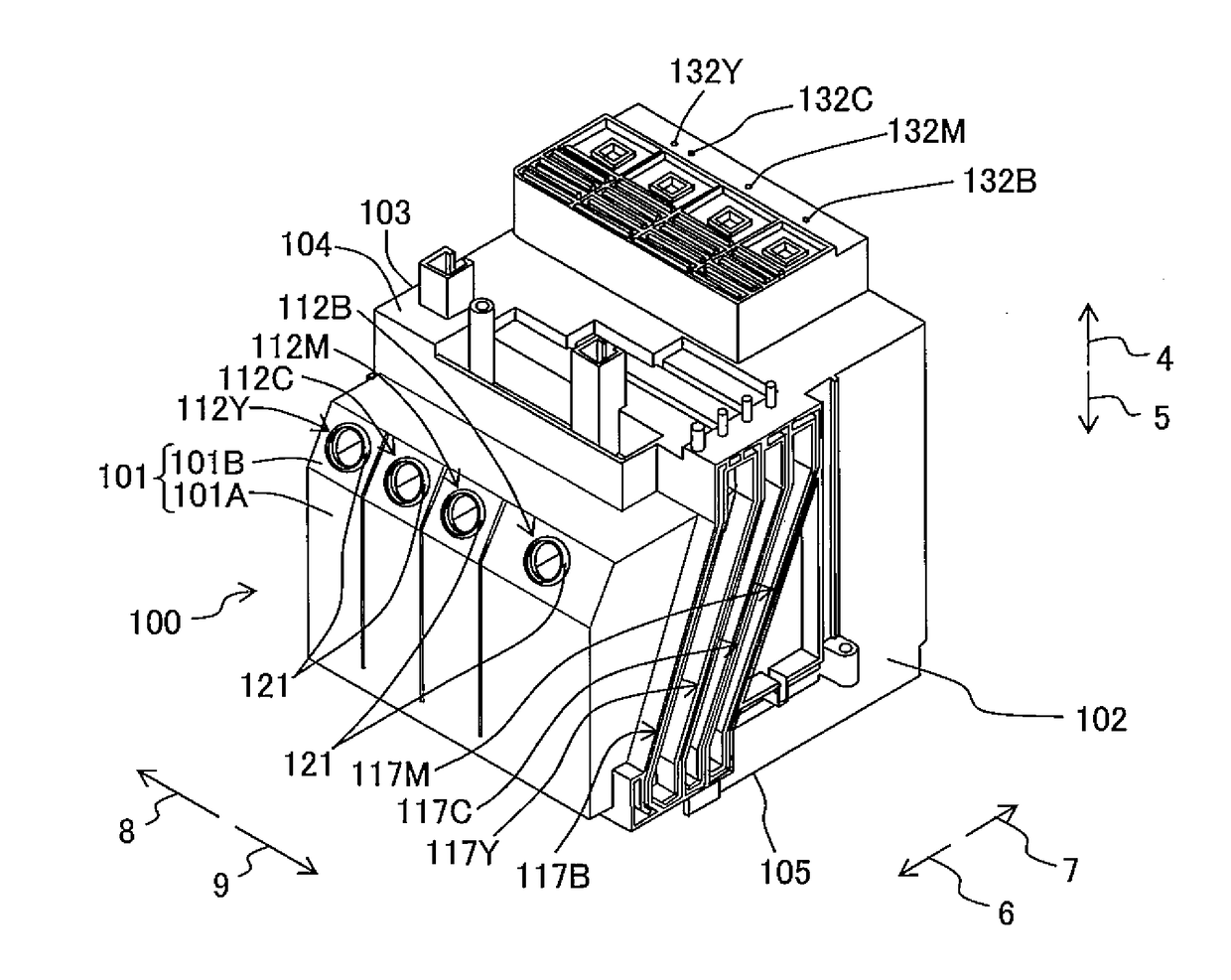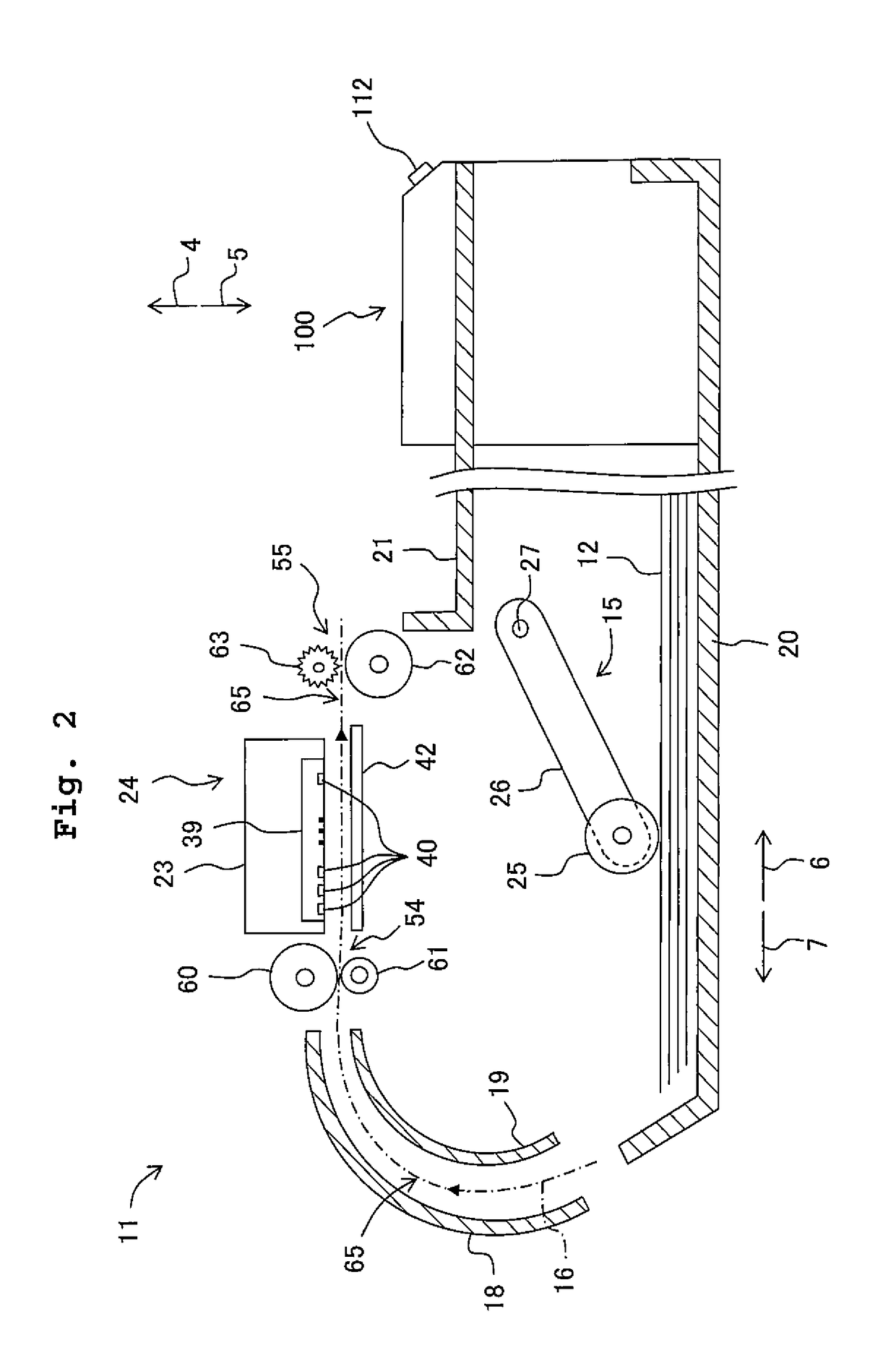Tank
a tank and cap technology, applied in the field of tanks, can solve the problems of small force by which the cap which has been elastically deformed returns to its original shape, and the cap installed in the inlet port might be inadvertently or unintentionally detached or come off from the inlet port, and achieve the effect of suppressing any liquid scattering
- Summary
- Abstract
- Description
- Claims
- Application Information
AI Technical Summary
Benefits of technology
Problems solved by technology
Method used
Image
Examples
second embodiment
[0138]It is allowable that an inlet port 192 and a cap 191 have the configurations as depicted in FIGS. 15A to 15C and FIGS. 16A to 16C, respectively. The cap 191 depicted in FIGS. 16A to 16C can be attached to and detached from the inlet port 192 depicted in FIGS. 15A to 15C.
[0139]As depicted in FIGS. 15A to 15C, the inlet port 192 is provided with a cylindrical wall 201 and three engaging portions 202.
[0140]The cylindrical wall 201 has a cylindrical shape of which center is the central axis line 151. The cylindrical wall 201 is extended in the first direction 155 from the periphery of an opening 101E provided on the inclined wall 101B of the ink tank 100. An end surface, of the cylindrical wall 201, facing the first direction 155 forms an inner guide surface 201B which is inclined with respect to the central axis line 151 (first direction 155) so as to approach more closely to the inclined wall 101B wall as separating farther from the central axis line 151, and an outer guide surf...
third embodiment
[0157]It is allowable to adopt a cap 210 depicted in FIGS. 17A to 17C, rather than the cap 113 depicted in FIGS. 7A to 7F. The cap 210 is attachable and detachable with respect to the inlet port 112 having the shape depicted in FIGS. 6A and 6B. The cap 210 is formed of an elastic material having a low modulus of elasticity such as rubber, elastomer, etc. Owing to the low modulus of elasticity possessed by the cap 210, stoppers 214 (as described below) are easily deformed.
[0158]The cap 210 is provided with a lid portion 211, an insertion portion 212, a seal portion 213, three stoppers 214 and a holding portion 215.
[0159]The lid portion 211 has a disc-shape with the central axis line 151 as the center thereof. The outer diameter of the lid portion 211 is greater than the outer diameter of the cylindrical wall 121. A surface, of the lid portion 211, facing the first direction 155 is defined as a front surface 211A, and a surface, of the lid portion 211, facing the direction opposite to...
PUM
 Login to View More
Login to View More Abstract
Description
Claims
Application Information
 Login to View More
Login to View More - R&D
- Intellectual Property
- Life Sciences
- Materials
- Tech Scout
- Unparalleled Data Quality
- Higher Quality Content
- 60% Fewer Hallucinations
Browse by: Latest US Patents, China's latest patents, Technical Efficacy Thesaurus, Application Domain, Technology Topic, Popular Technical Reports.
© 2025 PatSnap. All rights reserved.Legal|Privacy policy|Modern Slavery Act Transparency Statement|Sitemap|About US| Contact US: help@patsnap.com



